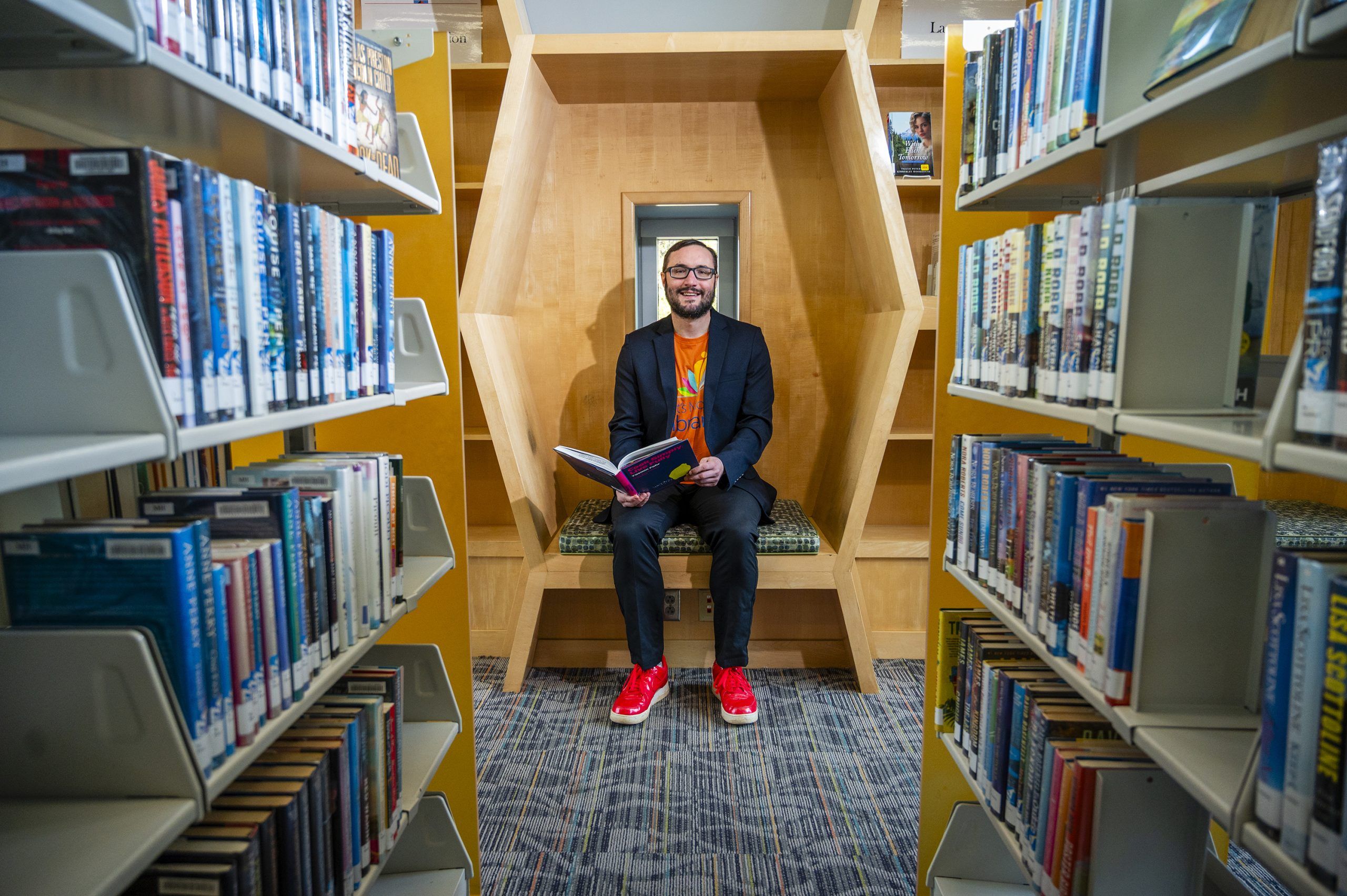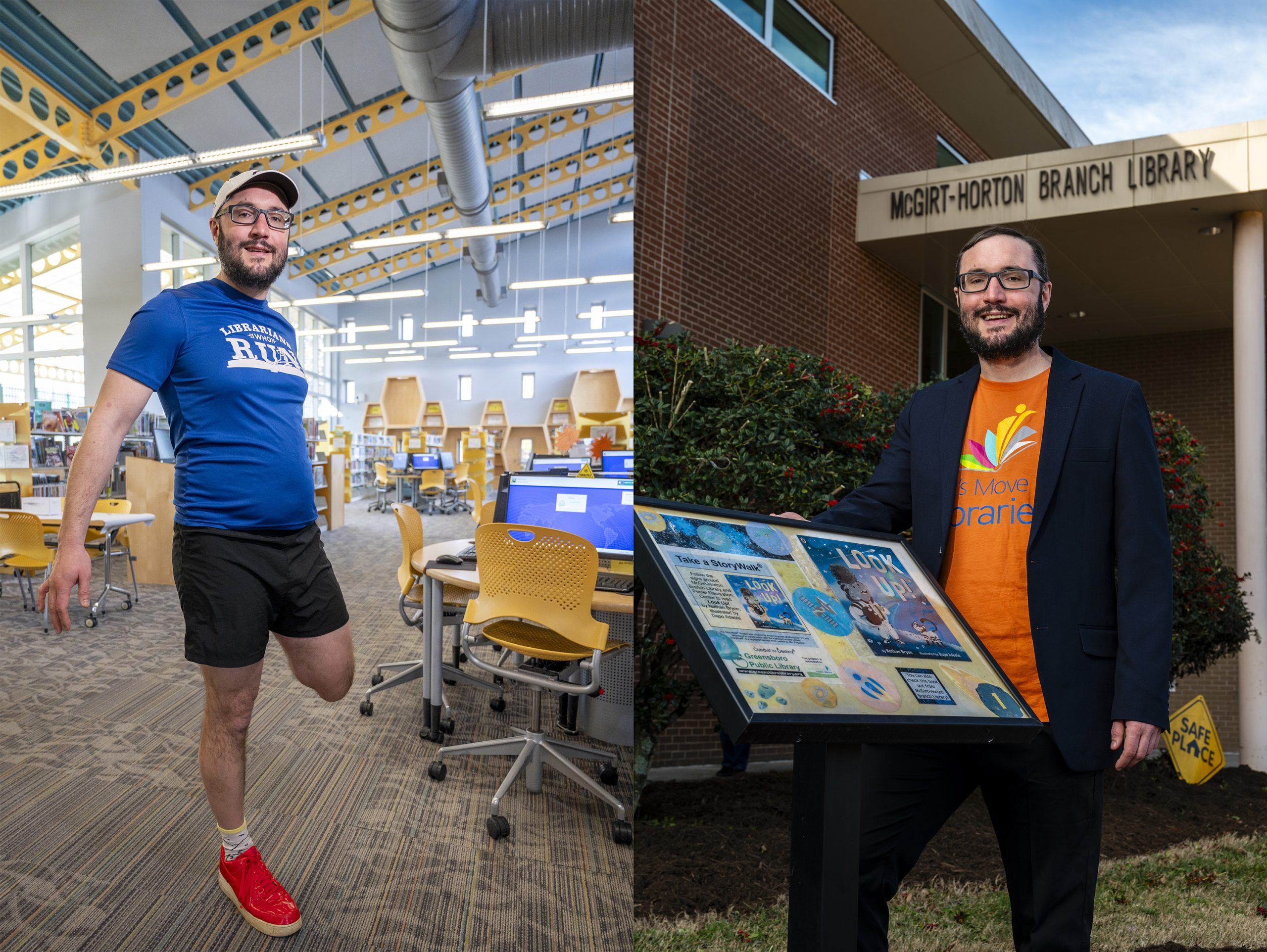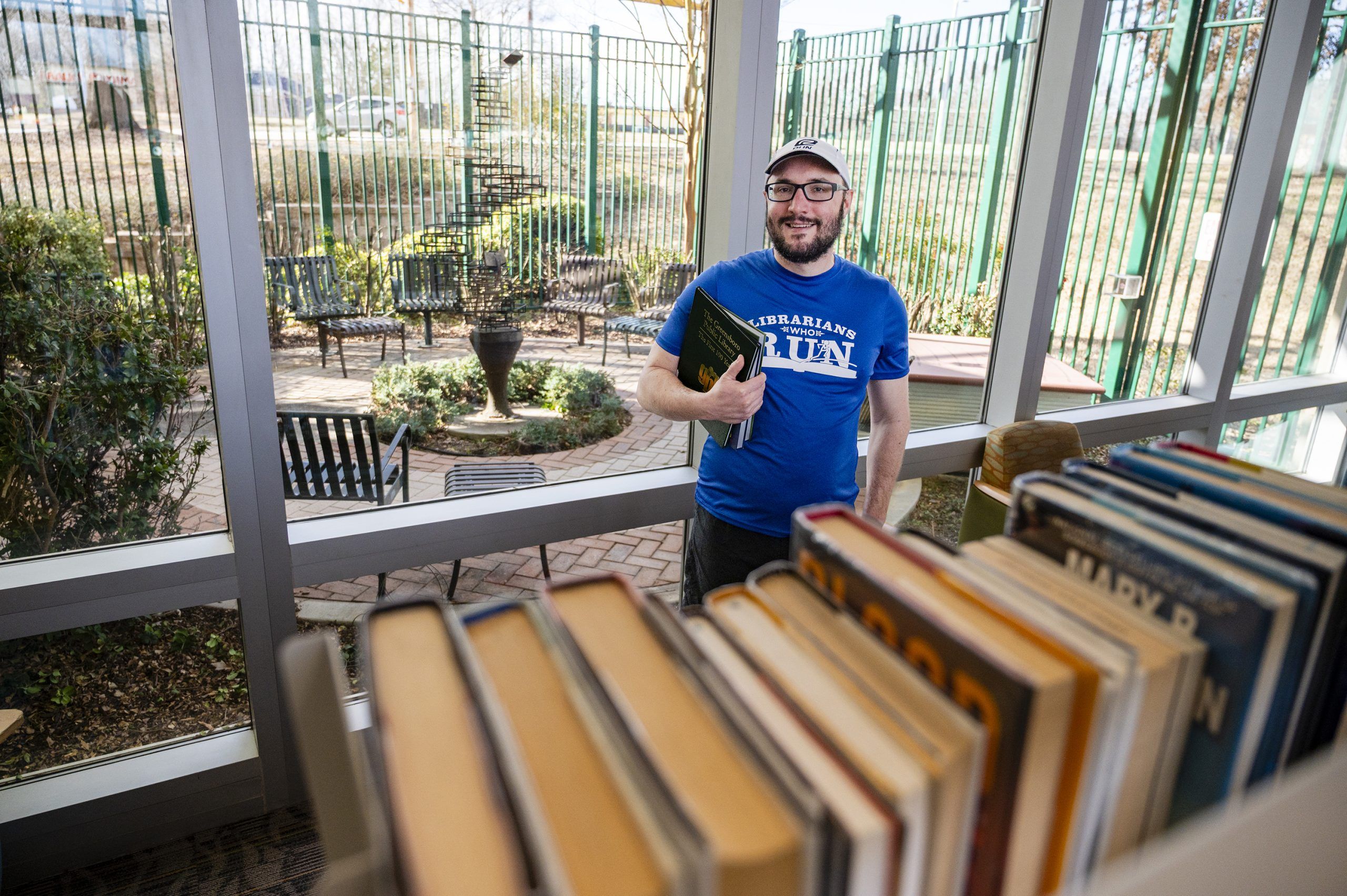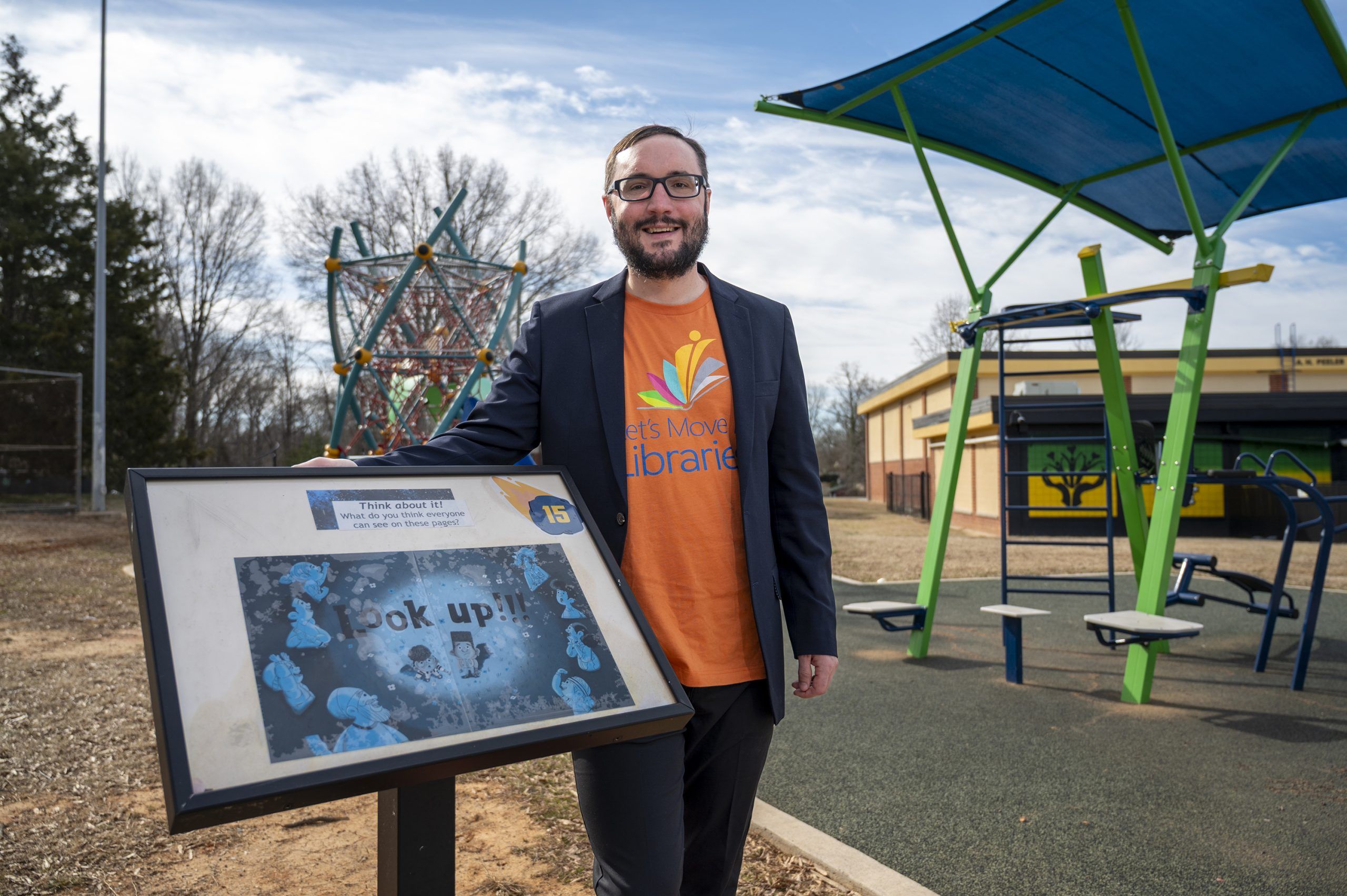Libraries, For Your Health
Libraries can transform communities locally and globally, says Dr. Noah Lenstra.
Wherever you are, even if you don’t have a car or access to public transportation, there’s a good chance you can get to a public library.
“The average American lives within 2.1 miles,” says the associate professor of library and information science. That stat powers his mission.
Since 2016, Lenstra has helped libraries in America and around the world boost healthy living in their communities through his “Let’s Move in Libraries” initiative.
In just the first two years, the movement drew libraries from every state and every Canadian province. The Let’s Move in Libraries website has nearly 50,000 visitors, 14 percent outside the United States, and Lenstra has been invited to speak about the work in the United Kingdom, Taiwan, and Australia.
Lenstra has always understood the power of libraries as a jumping-off point to a bigger world.
As a child growing up in northwest Illinois, he played video games in his local library. “In the 80s, there was nowhere else you could access a computer,” he remembers.
He had his lightbulb moment as a doctoral student experiencing difficulties with his own health. “My chiropractor told me, ‘You can keep coming in here, but it won’t do any good unless you get at the root cause.’”
Lenstra’s resulting quest for fitness opportunities led him to the discovery that, across the country, libraries were offering access to streaming fitness classes.
Story highlights
Dr. Noah Lenstra’s “Let’s Move in Libraries” initiative is inspiring libraries in America and around the world to boost healthy living in their communities.
A lightbulb moment to a movement
“In a lot of rural communities, senior centers and gyms don’t exist. But if you could get to a library, you could take a Go4Life class, offered online through the National Institute on Aging,” Lenstra says. “These classes were easy but effective – think strength training you can do in a chair.”
The classes illustrated just how effective libraries could be in connecting wellness information and opportunities to community members.
Lenstra launched Let’s Move in Libraries to share these findings – and grow the library health movement.
“Public libraries are beloved for three reasons: space, information, and reading,” he says. “Let’s Move in Libraries focuses on the space aspect. We see librarians transforming their own spaces and the spaces of their broader communities.”
With over 4,000 subscribers, the Let’s Move newsletter communicates health initiatives ranging from Geri-Fit at the Library classes to StoryWalks – community park trails where families on a stroll can read illustrated children’s books, page by page at stops along the path.
“The StoryWalk resource page alone has over 23,329 visitors,” Lenstra says. “We do an annual StoryWalk celebration with the Association of Bookmobile and Outreach Services.”
Transforming Libraries, Transforming Communities
On social media, the collective Lenstra is building is over 6,500 strong. Their efforts are making libraries places for community transformation.
He carefully reviews comments program attendees leave online. His favorite: “We all need each other – as well as a physical time for our bodies!’”



